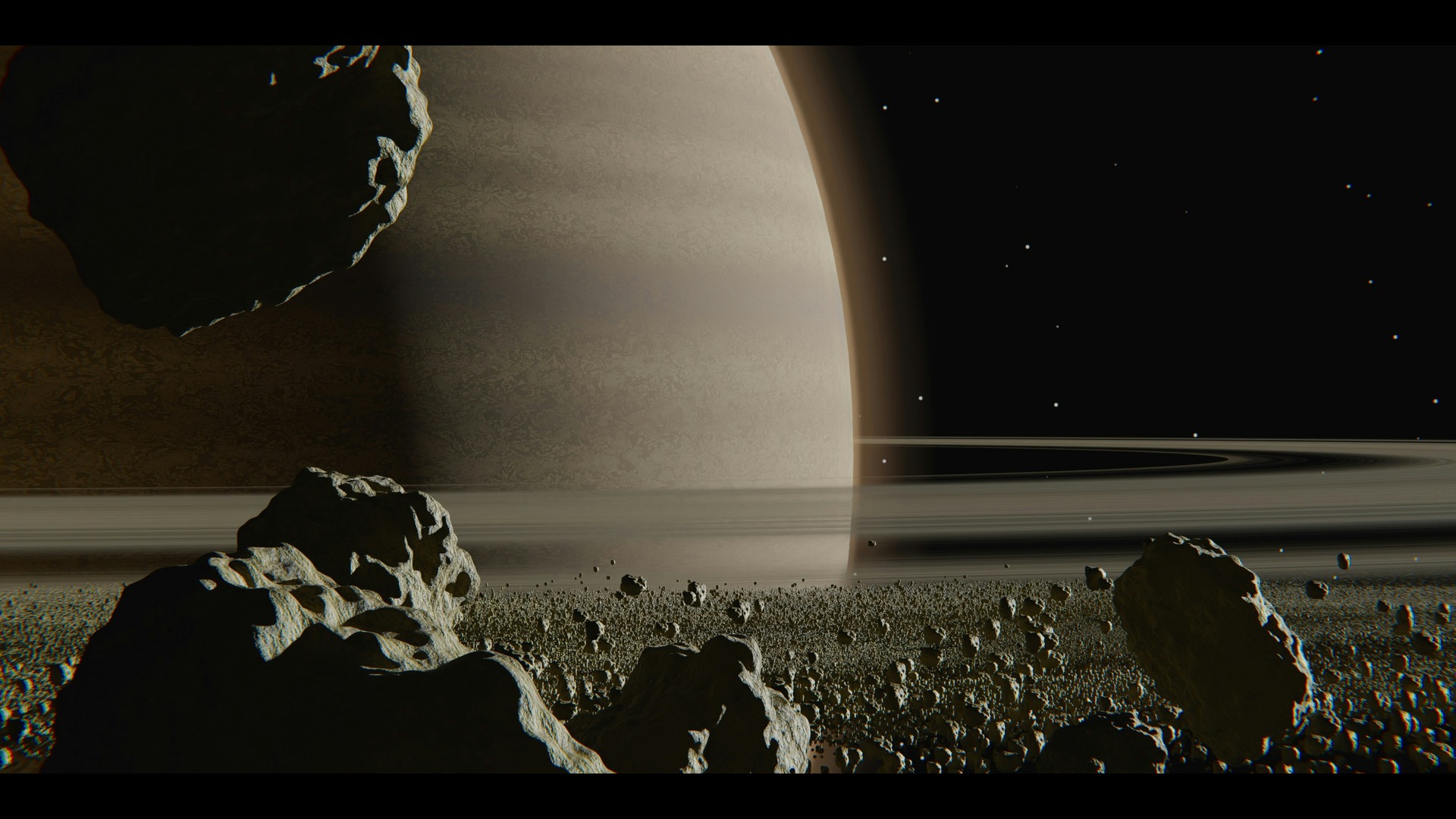



Revolutionized is reader-supported. When you buy through links on our site, we may earn an affiliate commision. Learn more here.
Have you noticed Saturn in the sky lately? If not, you might want to take a look soon. The planet’s iconic rings are about to perform an optical vanishing act, not just once, but for the second time in 2025. Here’s why the gas giants seem to shed its band and what really happens when it does.
It sounds dramatic, but the truth is far from catastrophic. Astronomers call it a ring plane crossing where the predictable alignment makes Saturn’s hoops of ice appear nearly invisible from Earth. The first crossing took place in March this year and the second will be in November. During these brief periods, the rings line up edge-on with our line of sight, creating the illusion that they have disappeared.
Saturn orbits the Sun every 29.4 Earth years, with its axis tilted at 26.7 degrees. This means the planet effectively nods as it moves along its orbit. From Earth, this tilt changes how observers perceive the ring. Sometimes people witness them in full width, while at other times they only see their thin edge. Twice per Saturnian orbit, the alignment is just right or wrong enough, depending on your perspective and the rings almost vanish.
While the visual disappearance is temporary, the rings themselves are very real. They span approximately 282,000 kilometers across, yet their vertical thickness averages only about a kilometer. Composed primarily of water ice combined with rock and dust, the rings are divided into seven main segments, discovered in the order D, C, B, A, F, G and E. The A band is the outermost visible segment, separated from the B section by the wide, dark Cassini Gap.
Even though the rings are vast in diameter, their thin profile is what allows this optical trick. Observing them edge-on is a rare chance for astronomers to measure ring thickness, density variations and particle distribution without the usual glare reflecting from their surfaces.
The 2025 disappearances are fleeting perceptual illusions. However, the bands are vanishing too, although on a much slower and longer timeline. The process is called ring rain. What happens is Saturn’s gravity gradually pulls icy particles from the inner rings into its upper atmosphere, where they vaporize. NASA estimates the process removes enough material to overflow an Olympic-sized pool every half hour.
At that rate, the rings could disappear permanently in a hundred million years. However, research continues to play tug of war on the actual age of the bands. One study estimates them to be 400 million years old, while a Japanese-led team suggests they may be as old as 2.25 billion years, approaching Saturn’s own age. Noting that the early solar system was far more chaotic, this could have influenced the formation of the rings.
Ring plane crossings are more than a visual curiosity. Historically, these events have allowed astronomers to discover smaller moons that would otherwise be lost in the glare of Saturn’s rings. For example, Janus and Epimetheus revealed themselves to astronomers during the 1966 optical event.
The temporary reduction in reflected light makes it easier to track some of its 82 satellites and analyze their orbital interactions. For scientists studying planetary dynamics, the 2025 crossings offer a chance to refine models of ring behavior, including particle collisions, resonance patterns induced by moons and the vertical structure of the rings.
If you want to see Saturn’s rings shrink into a thin line, timing and location matter. For those in the Northern Hemisphere, in November, the planet will be in the southeast, well placed for evening viewing throughout the month. Its rings will be tilted close to edge-on during the second half of the month.
In November, mid-southern latitudes will have the clearest view. Even if you’re not ideally positioned, Earth-based telescopes can capture subtle changes in ring angle, thickness and light scattering.
When Will Saturn Lose Its Rings?
Saturn first lost its rings in March this year and the November crossing will mirror that event. From November 17th to December 1st, the band will appear extremely narrow, as Earth situates itself about 0.4° from the actual edge line. This makes them appear as a thin hairline feature crossing the planet, rather than the broad system typically seen.
As for when the ringed planet will permanently lose its icy hula hoops, it may take up to a billion years for them to fully dissipate. Over that time, the rings will gradually resemble the faint ring systems of other gas giants, rather than the dense, expansive structure seen today.
The rings will gradually return to view after the crossing, reaching a more fully visible alignment again in 2032 when they achieve their maximum tilt toward Earth. This creates a rare, long-term timeline for monitoring both the short-term optical effects and the slow, inevitable decay from ring rain.
The dual disappearance in 2025 highlights a broader truth about planetary observation. What people see depends on perspective. Apparent changes in Saturn’s rings are driven by geometry, not necessarily cosmic estruction, but they give astronomers a practical laboratory to study the evolution of ring systems.
Saturn’s rings are a dynamic, evolving feature. Temporary disappearances and gradual decay provide insight into particle physics, gravitational interactions and planetary formation. Observers today can witness phenomena that won’t recur for another 15 years and the band themselves will not last for hundreds of millions of years.
Saturn is definitely not losing its rings. It will only appear that way from Earth’s vantage point. This celestial visual alignment is fascinating to observe and beyond that, it has helped many astronomers and scientists confirm or debunk long-held assumptions about the orb. As the rings seem to come and go, don’t forget to look up at the night sky sometime this month. You just might catch a glimpse of them appearing to vanish.
Revolutionized is reader-supported. When you buy through links on our site, we may earn an affiliate commision. Learn more here.


This site uses Akismet to reduce spam. Learn how your comment data is processed.